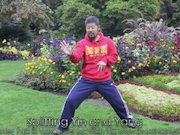We will have an online class based on this video using the comment section of this video at 10:30 am Central Time, 11:30 pm Eastern Time on Saturday, April 4, 2020. On the days that I am teaching, I have selected a series of videos that will be taught in a sequential manner. The primary emphasis will be improving your understanding of how to take an opponent’s space that utilizes the principles that are inherit to Chen Style Practical Method Taijiquan. The video’s include:
1. Step Up To Ji
2. Move Where He Is Not.
3. Warping 2 Energy
4. Dimensions: 5 Points.
5. Proportional Movements.
In the first video, Step Up To Ji, Master Chen teaches students a method of how to take space from an opponent. He teaches 3 different exercises during :30, 3:25 and 5:40 of the video. For those participating this Saturday, write down the steps for each exercise and practice them. Identify and write down the principles that you see being taught. Following that write down observations and/or questions to post. Additionally, when you have practiced, I recommend that you make a short 1 minute video of yourselves doing each of the exercises. If you wish, you can send them to me for feedback.




{ 9 comments… read them below or add one }
Please start commenting and asking questions after you have reviewed the video, even it is before the scheduled time, no time limits here. Thanks
My notes on the video:
Get in without fighting/pushing against the opponent’s power. Keep the original point of contact with the opponent’s power. Use the power to advance.
First drill: keep the hands in place, advance the feet and body.
Second drill: on the touch, keep the hands in place, advance the elbow/body to match the touch. Don’t move your hands. Don’t push. Extend your arms first so that you have room to advance your elbow/body. Quickly and lightly. Cover lots of distance. Go down to advance.
Third drill: now keep the forearm in place, go down to advance the body. Gain below with the foot, don’t lose or fight with the forearm. The elbow withdraws with rotation when maintaining the forearm position. The follow-up to this drill is once the foot is in position, it allows the arm to have leverage.
Analogy to a crowbar: you should not try to pry before wedging it in position. Once in position, it has a lot of power. The rhythm should match the opponent. His push sets up your foot; when he stops, you pry him.
Edward, you said “First drill: keep the hands in place, advance the feet and body.” In advancing the body he referenced 3 points to move at 1:41…here, here and here…what 3 points was he referring to?
Good points to recognize:
-Where is the fight (where are they fighting, where are you fighting?)
-How can you get past the point of differentiation?
-How to separate different body parts without getting caught
-What to move/what not to move
-Paying attention to the feet
Great video!
…you do that alot Brennan!!! I have been able to get in on you and lock up your top. It worked for a year, then you developed the ability to “not move your top, while taking the space below” (upper+lower body separation) just like the the crowbar analogy…lots of power and hard to detect until it is too late!
Very clear on what is fighting and what is withdrawing…is that then matching…listening???
:30 Steps
1. Lock hands on opponent or on a fixed point.
2. Use elbow, shoulder, and Kua.
3. Step forward and back
3:25 Steps
1. Step forward and back (again, hands should be locked on a fixed point: they don’t move).
2. When stepping forward leg goes behind opponents leg, taking up space without them noticing
3. Move quickly and lightly
5:40 Steps
1. Taping arm and elbow
2. Step forward (inside)
3. Elbow rotates slightly as you move forward, but the elbow does not move.
Principles Being Taught:
Sequential movements
You’re not fighting and you’re not retreating/withdrawing. You’re taking up space, matching, and listening.
Using power makes the rhythm off.
Observations/Questions: What would you recommend doing if I can’t stop moving my hands when I step forward?
“2. Use elbow, shoulder, and Kua”, very significant point!
To stop your hands from moving you could start the exercise by fixing your hands on a wall for a hundred or so repetitions. Then have a long piece of tape or a stick in front of you where it can be used as a physical point of reference to do the exercise several more repetitions. Video record yourself doing it. When you see your hands are not moving, do it without the reference point, imagine your hands touching something…
Please put the comments at http://practicalmethod.com/2016/11/step-up-to-ji-online-video-trailer. Thanks.